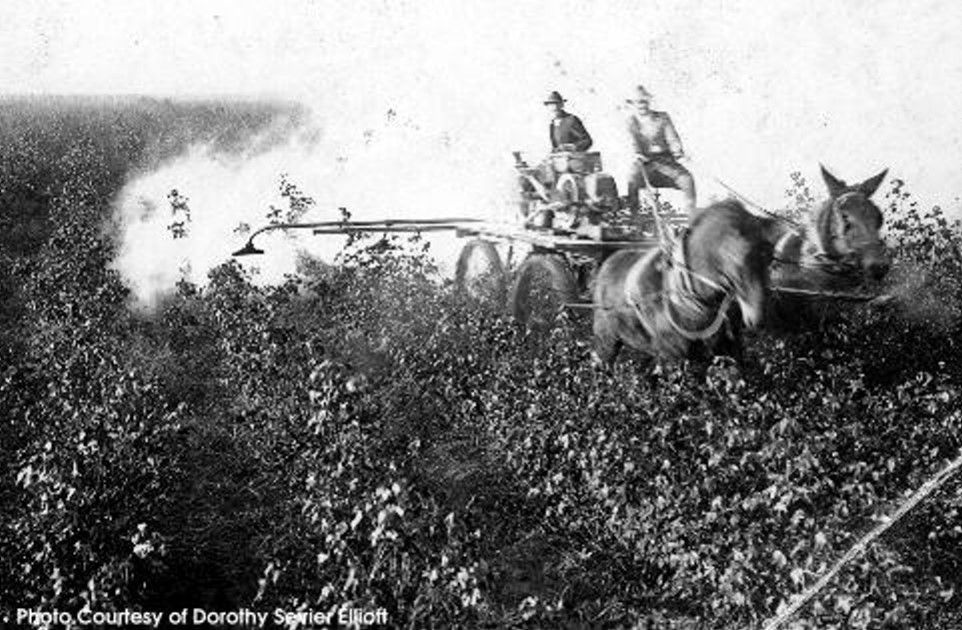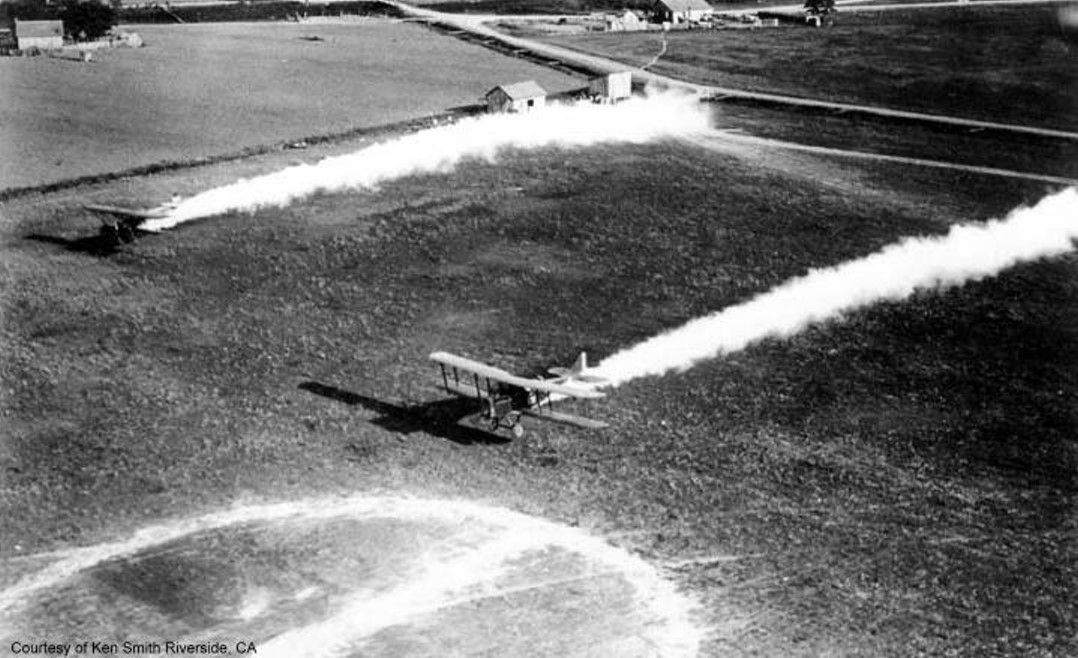HISTORY of
TALLULAH
LABORATORY, BUREAU OF ENTOMOLOGY,
U. S. DEPARTMENT OF AGRICULTURE
By C. S. Lecky
and Minnie S. Murphy
June 3, 1936
Written as a
Work Project Administration (WPA) Project
Visitors welcome between 9 a.m. and 4 p.m. Located two
miles south of Tallulah, upon bank of Roundaway Bayou and directly on U.S. 65
(Tour 10).
Madison Coordinator’s Note: The photos
below were not a part of the original article but were added to enhance the
story. RPS March 2009
While the experiment station in which serious students of
the family and home life of insects, notably the cotton planter's Public Enemy
No. 1, the boll weevil, conduct their research into the habits, lives and
methods of destroying insect pests is a businesslike place, operated on
scientific basis and without frills, it has nevertheless a pioneer aspect.
“Bug Lab” Offices during 1927
Flood (5/15/1927)
It was at this station that the first plans to kill boll
weevils by use of calcium arsenate and by dusting cotton fields with this
poison from low flying airplanes were formed and the first experiments inaugurated
along these lines.
Scientists as earnestly seeking death dealing substances as
other scientists, in other lines of research, have sought to prevent diseases
or learn their sources, here pursue their investigations.
Machines, designed by hopeful inventors to bring wholesale
death to insect hordes and wholesale wealth to manufacturers are patiently
tested out and reports made as to advantage or disadvantage.
And, on moonlight nights, fliers dart about high above the
ground to catch in the equipment with which the planes are furnished, specimens
of insect life at varied levels.
All this work and research has its center in trim, neatly
kept grey buildings with carefully trimmed lawns and the national banner
floating proudly on a tall staff, two miles south of Tallulah, not far from the
site of Old Richmond, first parish seat and burned in Civil War Days by Federal
soldiers.
Visitors, laymen or experts, are
cordially received.
HISTORY: R. A. Cushman, who had carefully surveyed North
Louisiana and had found Madison Parish and Tallulah ideally and
representatively located, established at the latter place on or about July 1,
1909, the Tallulah Laboratory, Southern Field Crop Insect Investigations,
Bureau of Entomology, United States Department of Agriculture, remaining in
charge until succeeded in November of 1910 by G. D. Smith.[1]
Early work at the laboratory consisted very largely of
studying the life history, habits and enemies of the boll weevil, an insect
pest from the tropics, native to Mexico, Cuba and Central America, which, after
devastating and causing abandonment of much fine cotton land in Mexico had
slipped across the Rio Grande near Matamoras, without benefit of passport or
visa, and made itself very much at home in cotton fields of this country.
This immigration occurred in 1892 and, when the Tallulah
laboratory was established in 1909, Louisiana and other southern cotton growers
were suffering so severely from boll weevil inroads that special extermination
measures were necessary.
At the Tallulah laboratory, it was decided that, in order to
learn how best to exterminate the pest, its life and habits should be studied
carefully, so a Lilliputian village, like a playhouse community, adorns the
laboratory grounds.
In these little structures boll weevils are propagated and
raised, their appetites, tastes and habits, and effects of various poisons and
parasites on their development carefully studied.
The little houses are rent free and properly furnished, some
with Spanish moss, others with cotton stalks, corn stalks, sawmill debris or
bare earth.
Each cage contains 500 boll weevils. Study has disclosed
that most survive in the corn stalk environment, with Spanish moss second best
home and bare ground the poorest.
Madison Parish, bordering the Mississippi River, with good
rainfall, moderate temperature and areas of heavy timber, draped with Spanish
moss for hibernation, was selected as typical of the many thousands of acres of
cotton land already, in 1909, infested in the United States.
By 1922 the pest had spread in this country to 614,113
square miles of cotton producing land, leaving only about 91,000 square miles uninfested.[2]
In the interim, about 1916, experiments were begun with
calcium arsenate, conducted within a radius of 14 miles from Tallulah, and the
arsenic combination proved most deadly of any yet used.
Three years later the results had been shown so beneficial
that manufacturers grew interested and produced 3,000,000 lbs. in 1919 for use
against boll weevil. At the Tallulah laboratory the chemical compound was
stabilized and its physical and chemical qualities developed, while other
experiments were being made with apparatus for applying the poison to the
cotton.
Such apparatus ranged from the "handgun", small
and unsatisfactory through the slowness and labor necessitated, to the one or
two mule machines, which, with numerous nozzles, spray several rows at a time.
A motorised machine tried in the early period proved
too complicated for any but skilled users.[3]

Dusting by Hand

Dusting with Mules
However, in 1922 airplanes, having been successfully used in
Ohio the previous year against catalpa tree pests, arrangements were made to
experiment along that line at the Tallulah laboratory and two planes with their
pilots and mechanics were detailed there by the army air service.

Early Test-dusting from Air
After crude start, dumping the poison over the sides from
sacks, hoppers were developed and present day 'dusting' methods eventually
evolved.[4]

1925 Photo Showing Several
Dusting Methods
Scott Field, Site of the
Dusting-by-Air Activity (during 1927 Flood)
Later the laboratory turned its attention to the cotton flea
hopper and insects, such as the cotton louse, cutworm, and others.
The Division of Cotton Insect Investigations was created in
1925, with B. R. Coad in charge and headquarters at
Tallulah, the latter being moved to Washington in 1931 while the laboratory was
maintained at Tallulah.
PRESENT MANAGEMENT: The Tallulah laboratory is operated by
the Bureau of Entomology and Plant Quarantine, with a superintendent in charge.
Visitors are shown courteous attention, during the hours from 9 a.m. to 4 p.m.